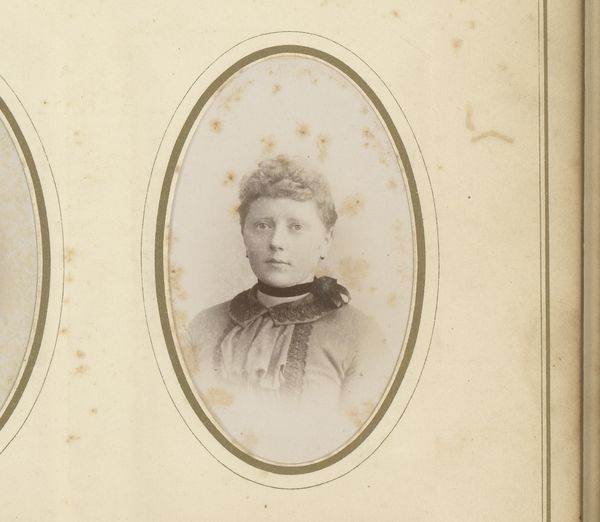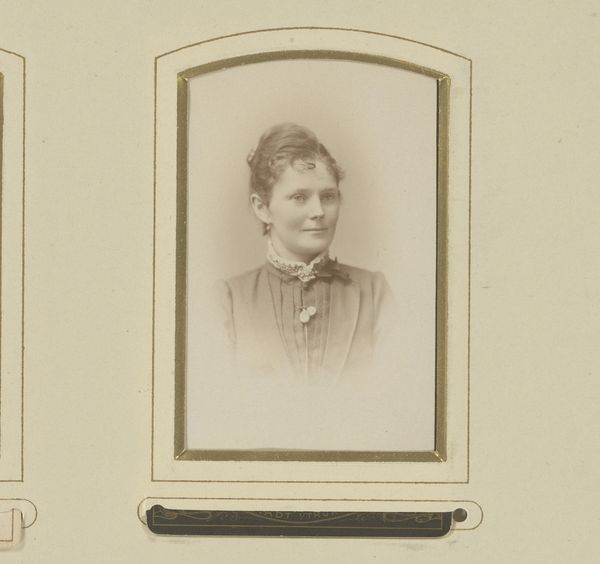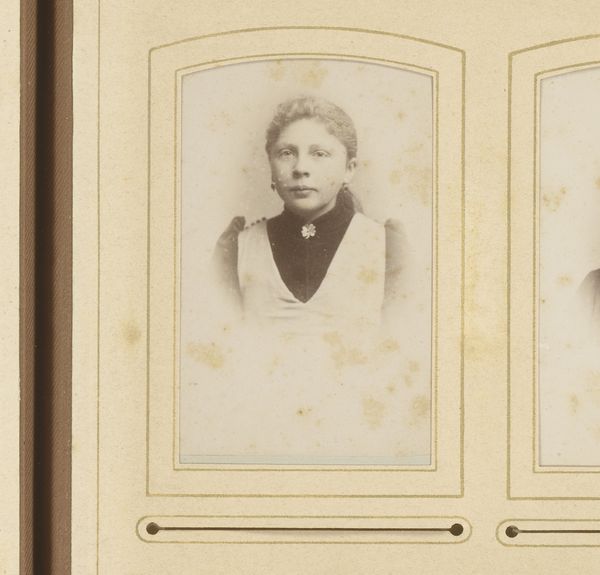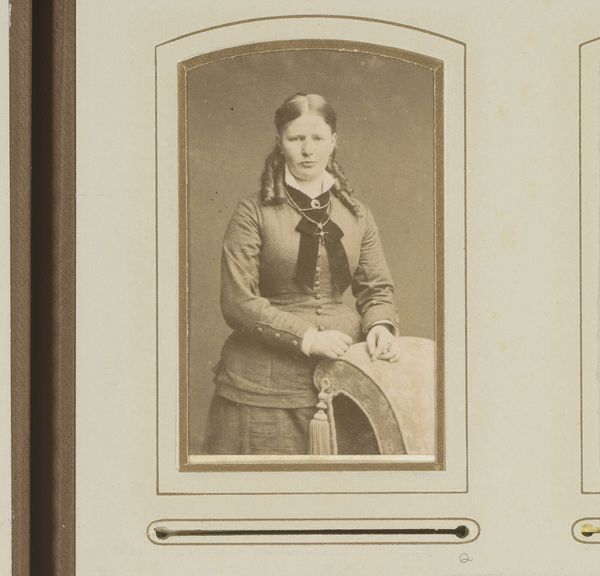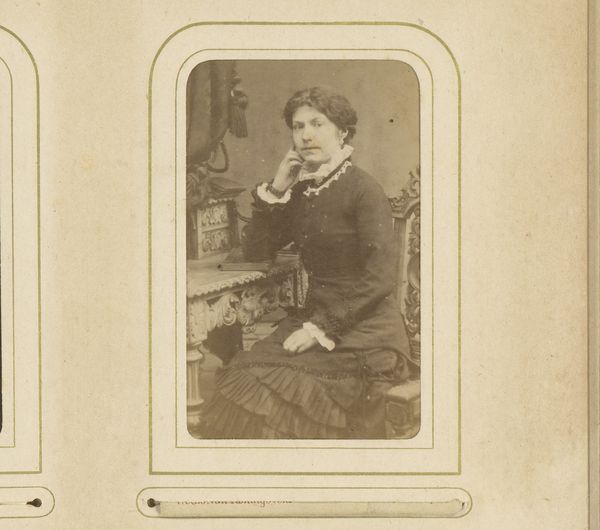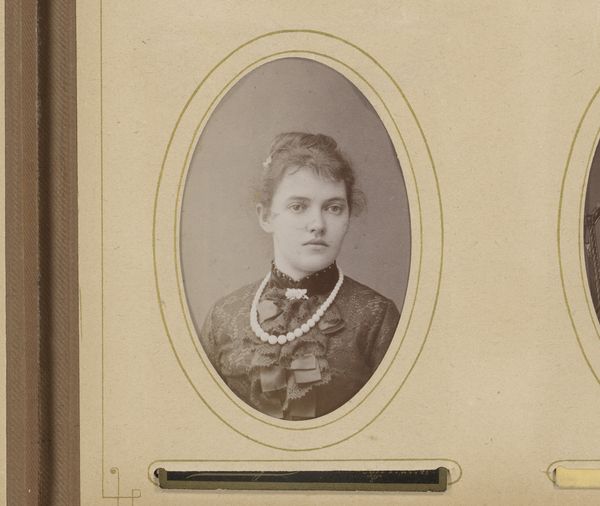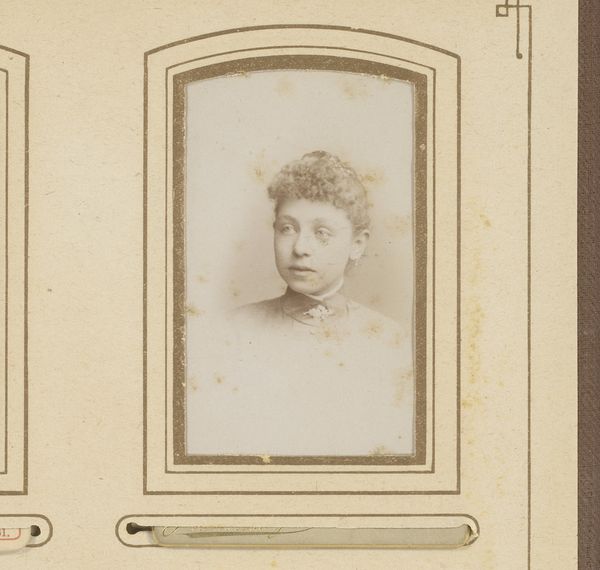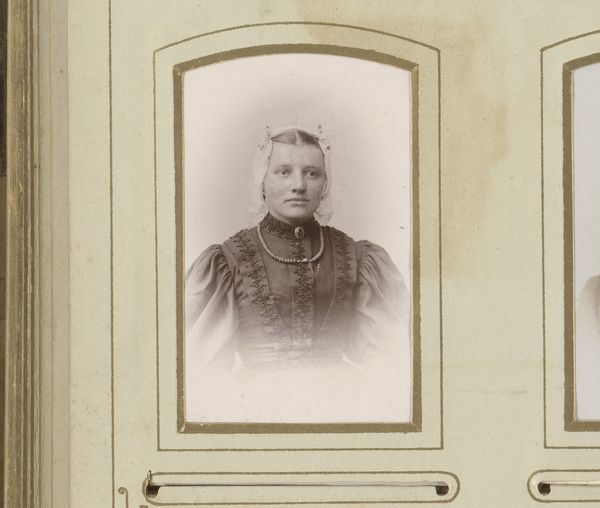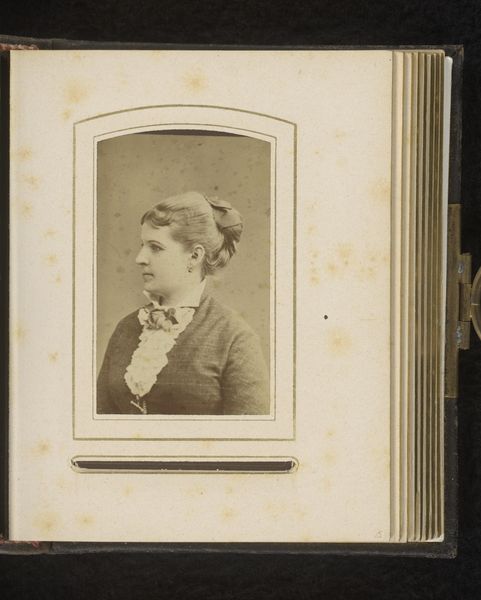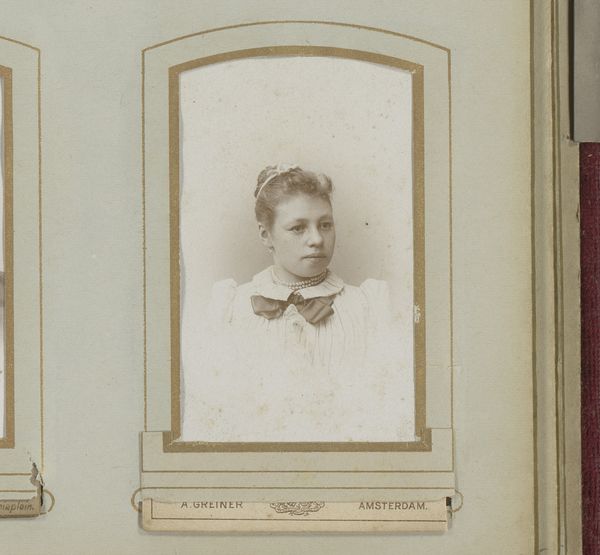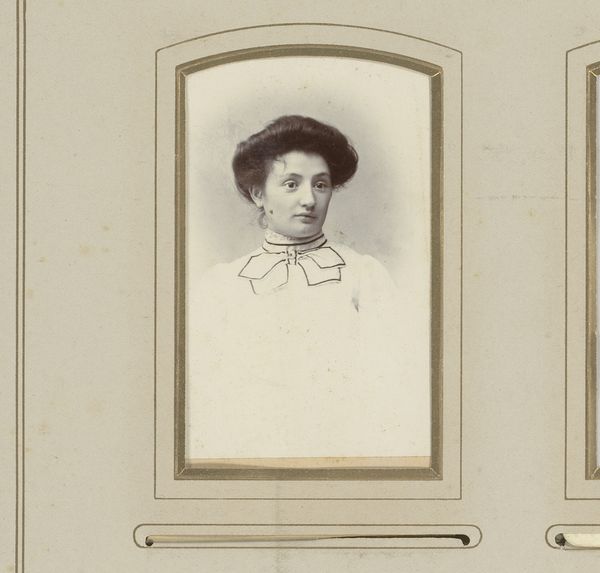
photography
#
portrait
#
photography
Dimensions: height 85 mm, width 53 mm
Copyright: Rijks Museum: Open Domain
Curator: Here we have a photographic work titled "Portret van een vrouw" created sometime between 1880 and 1910 by Wilhelm Holtorp. It presents as a delicate study of its subject. Editor: My first impression is of a subdued, almost ghostly presence. The soft sepia tones give it an ethereal quality, like a memory fading at the edges. Curator: Indeed. Note how the formal composition directs the viewer's gaze inexorably toward the woman's face. The subtle gradations of light and shadow model her features, emphasizing her placid expression. Holtorp employs a classically structured portrait. Editor: But what about the labour that went into producing such a picture? The processing of the photographic plates, the potential sittings the woman endured, and the chemical processes used to obtain this delicate image. It would have involved meticulous work and specific expertise to create, especially during this period when photographic practices were more arduous. It is a commercial product of an emergent visual culture that valued realism through the development of industrial chemistry and skill. Curator: A salient point. Considering the era, it speaks to societal conventions regarding portraiture—a way of documenting identity, but also an exercise in presenting an idealized version of oneself. The lack of excessive embellishment almost amplifies an intended demure sensibility through restricted sartorial codes. Editor: It begs a question though: who was she, really? Beyond being an ideal of womanhood and simply a photographic product, where do we begin to consider her lived experience within the production of this artwork? How much of this "idealized version" of herself in clothing, bearing, and composure, might reflect the restrictions, even exploitation, in turn-of-the-century expectations placed upon her by the very processes through which she is rendered? Curator: It's compelling how you view the portrait not only as the surface level subject but a confluence of material production, labor, and implicit socio-political dynamics as well. Editor: These works allow us to rethink the boundaries of art and social reality, which have a lasting connection beyond aesthetic consideration. Curator: An engagement of deep substance. It brings forth essential issues.
Comments
No comments
Be the first to comment and join the conversation on the ultimate creative platform.
